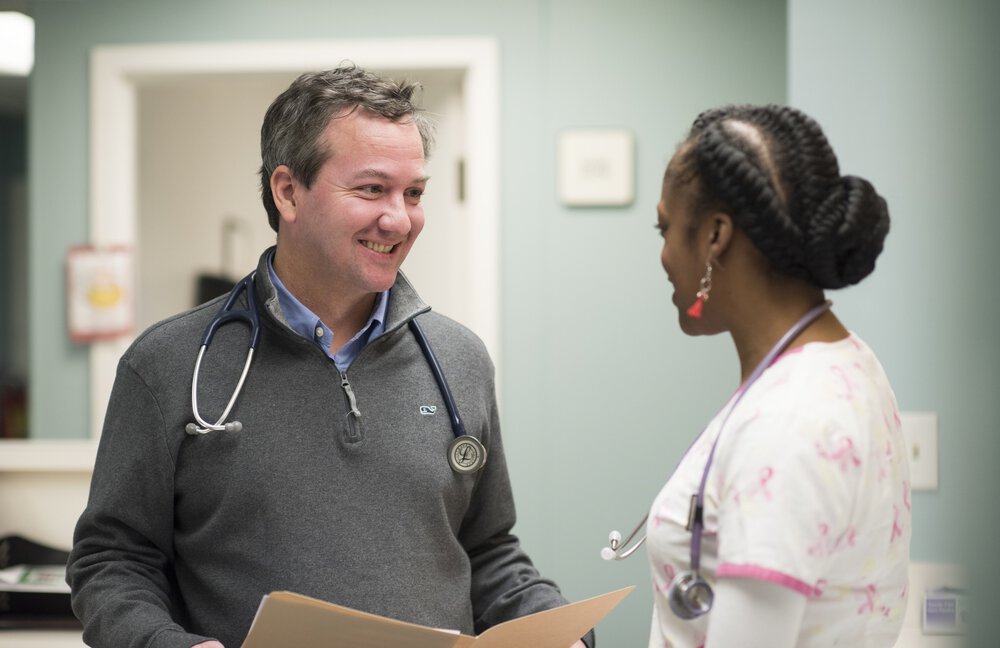All Digestive Diseases and Conditions We Treat
At MUSC Health, we treat a full range of digestive diseases, from common GI issues to complex conditions.

At MUSC Health, we treat a full range of digestive diseases, from common GI issues to complex conditions.
We offer advanced diagnostic tests to evaluate digestive issues and determine the best care options.
MUSC Health offers expert surgical treatments and programs for complex and routine digestive conditions

Unlike most organs, the liver can regenerate lost tissue, and this fact has had an enormous impact on the field of liver transplantation.
The liver was once thought of as one of the most important organs in the body, along with the heart and brain. It was thought to control a person's emotions, and to be called 'pigeon-livered' was to imply you were a meek and spineless person. A large liver endowed a person with courage and daring.
Liver damage can be caused by many factors. Alcohol and some drugs are toxic to the liver, but damage can also occur because of infections, and even exposure to some types of shellfish. When the liver is damaged, the body is unable to perform these vital functions. People with liver disorders experience fatigue and nausea.
Perhaps the most often-heard statement in drug advertisements is, "Do not take this if you have liver problems." All drugs are filtered through the liver, and this can have adverse effects on the treatment of patients with liver damage.

The gallbladder is a small organ that stores bile. It is attached to your digestive system by a system of hollow ducts called the biliary tree. The gallbladder sits in an indenture underneath the right lobe of the liver. It is about one inch wide and three inches long, and tapered at one end where it connects to the cystic duct. It is a muscular organ that contracts when bile is needed, and forces the enzyme through the cystic duct.
There are three main parts of the gallbladder:
The connection to the cystic duct is known as Hartmann’s Pouch. When gallstones get stuck, it is usually at this juncture.
The gallbladder creates a reservoir for bile, also known as gall, hence the name gallbladder. The bile that is stored here is actually manufactured in the liver. The bladder itself is not very large; however, bile is a strong enzyme.
Fat is difficult to digest. It resists being broken down into usable energy. Bile is a strong enzyme that assists in breaking fats down. When the food you eat contains fat, the stomach and duodenum secrete a substance that stimulates the gallbladder to contract, thereby forcing bile into the digestive tract. Bile emulsifies the fat, making it available for energy production.
The gallbladder stores bile juices and strong enzymes that in some instances can create stones called gallstones. These stones irritate the lining of the gallbladder, and sometimes migrate through the biliary tree. Most of the time this occurs without incident; however, stones can become lodged in the biliary tract. This causes severe pain.
Gallbladder removal is a common medical procedure that has little effect on the lifestyle. You may experience some discomfort if you eat a diet high in fat. Remember that the gallbladder stores and secretes enzymes for the purpose of breaking down fat so that it may be used as energy for the body. Your doctor will have more information about any lifestyle changes you may wish to consider.

The stomach is where food is initially broken down for the purpose of digestion, after which it travels into the first part of the small intestine, commonly referred to as the duodenum. In the duodenum, digestive juices (secretions) are added that further process the food into usable energy for the body. These secretions come via the biliary tree.
The biliary tree is a system of vessels that directs these secretions from the liver, gallbladder and pancreas through a series of ducts into the duodenum. The exit hole into the duodenum is called the papilla of Vater. (Because of the structure of the connections to each organ, the biliary tree, or tract, bears some resemblance to a tree and its branches, hence the name.)
An X-ray image of the biliary tree during an ERCP.
Breaking down fats —also known as lipids, fats are very concentrated forms of energy essential for proper growth and maintenance of the body— is an important part of the digestive process. However, lipids that are still present in foods that have been passed from the stomach to the duodenum are quite difficult to dissolve.


